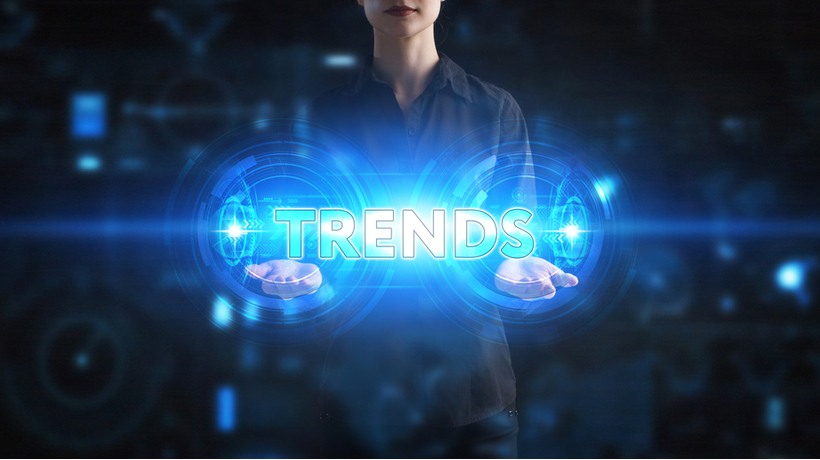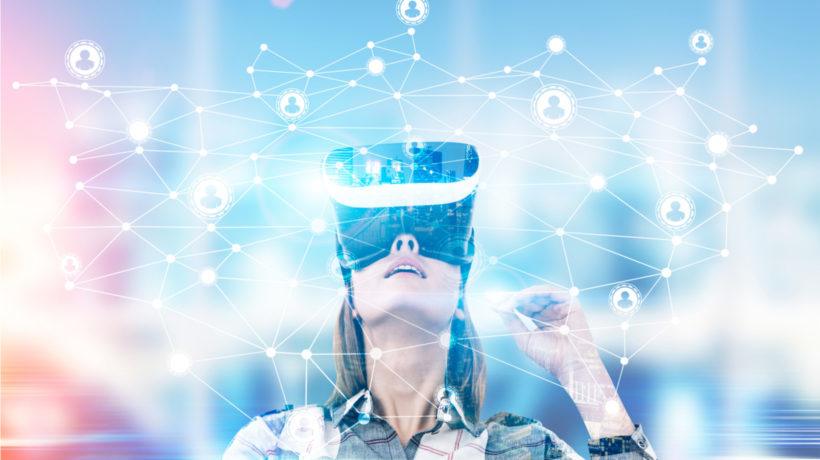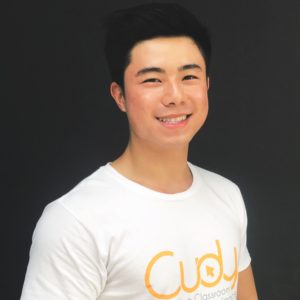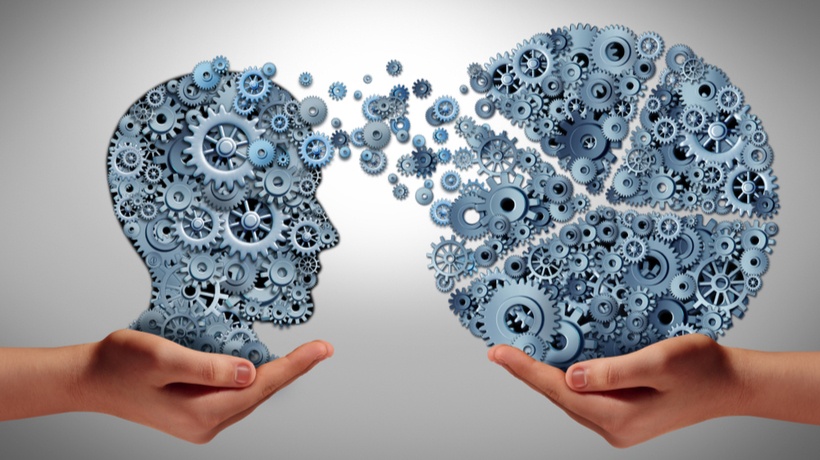A Water Metaphor To Show How Our Educational Technology Should Change
The first period is called the Polluted Pond. The second period is called the Streams of Strife. The final period is called the On Edge Ocean. In the first two periods, educational technology resolved major educational issues associated with these periods. In the third period, I explore ways educational technology must innovate to address the associated educational challenges of the period.
1. Polluted Pond
The first period is called the Polluted Pond. Imagine a place where the only source of water is a stagnant, polluted pond. Water would be guarded and rationed carefully. The population would be perpetually thirsty given the small size of the pond, and the wealthy and powerful would likely receive a greater share of the water. The polluted pond would incubate parasites and bacteria increasing the health risk unless it was filtered. Filtering would be a highly sought-after service.
Applying the metaphor 'information is water' a good historical example of the Polluted Pond is 13th century Europe. Scholars estimated that only 5% of the population could read and write at that time. Formal educational opportunities were scarce and, in some cases, prohibited. Known as the dark ages for the period’s lack of records and a decline in artistic and intellectual pursuits, scholars described the period in terms of general stagnation and corruption. During this period, information was scarce, stagnant, and polluted like the Polluted Pond’s water. Institutions and governments guarded and rationed information. 95% of the population were information-thirsty. Leaders filtered the information to reduce the risk of misinformation from societal parasites. In a Polluted Pond state of existence, what educational technology could improve the population’s situation?
The Gutenberg printing press (invented around 1439), utilizing metal movable type and oil-based ink, made printing books economical in Europe. This technology quickly expanded opportunities for literacy as well as authorship. Scholars credited the printing press as a catalyst for wide-reaching societal improvements and estimated that 20 million copies of books had been printed in Europe by the end of the 15th century (McLuhan, 1962). The printing press, within the water metaphor, represents a water pump that tapped into a new spring of water separate from the Polluted Pond. The water pump allowed for new flows of water with each pump cycle and more abundance of water. Water did not need to be strictly rationed and guarded, just pumped. As a result, much more of the population now had access to water. The population, in general, abandoned the Polluted Pond, with its parasites and bacteria. Filtering services became generally obsolete. The Gutenberg printing press, as an educational technology, radically changed the Polluted Pond period.
2. Streams Of Strife
The second period is called Streams of Strife. Imagine a large wilderness dotted with water pumps, each of which creates a flowing stream of water. Each stream has different characteristics such as speed, depth, and width, and travels in different directions. Varying in fish, water salinity, mineral deposits, and bottom (e.g., rock, sand, vegetation, etc.), the streams invite isolated populations to settle among them. Rarely would they travel to other streams because of a bias towards and familiarity with "their" stream. Within a specific stream’s population, stream guides were employed to help point out the best fishing, to avoid swamps, and to purify the drinking water, among other things.
Following the metaphor, information is water; a good example of the Streams of Strife is World War II and the Cold War historical period. The world was dotted with specific information streams, particularly regarding the humanities. The separate streams varied in politics, art, philosophy, history, sociology, geography, and language, among other subjects. The populations "drinking" from each information stream rarely traveled to or studied the other streams closely, and they exhibited the bias toward "their" stream’s superiority. Each population endowed guides to pick classics from their information streams. These classics, which required learning for the younger generation, became the canon and curriculum. Where canons disagreed across the globe, there was strife and conflict. In a Streams of Strife state of existence, what educational technology could improve the population’s situation?
The internet browser was introduced in 1990 and popularized in 1994. Scholars estimated there were 300 million internet browser users in 2000, and approximately 4 billion in 2017. It might easily be said that internet browsing was ubiquitous. At the same time, international tourist travel doubled between 1990 and 2016. The internet browser, within the information is water metaphor, liberated populations from solely drinking from "their" stream. This technology quickly expanded opportunities to interact with other streams and other populations. It allowed for the deconstruction of the canons and curriculums as classics. The role of single-stream guides shifted to the role of internet explorer. No longer could the population be restricted to "their" stream or isolated to "their" classics by governments and institutions. The internet browser could bring all streams together into one body of water and as an educational technology, radically changed the Streams of Strife period.
3. On Edge Ocean
The third period is called On Edge Ocean. Imagine a world completely covered by a vast ocean; full of currents, winds, waves, storms, deep channels, shallow reefs, and few islands. Water is everywhere and always moving. Conditions vary by the minute across the massive ocean. Imagine a population that lives on sailboats. Unfortunately, it seems to the population that the few islands found are volcanically active, making residency ultimately temporary. They are forever sailing and looking for a more permanent island. In the On Edge Ocean, the sailboats are equipped to desalinate the ocean water for drinking, to contact other sailboats anywhere in the ocean, and to capture environmental and navigational readings. While on the sailboats, people learn to connect to the ocean and its constant change. Without this connection, that is, without paying close attention to the ocean; the risk of shipwrecks is high. A risk that brings elevated levels of anxiety anytime the population feels disconnected.
Following the metaphor, information is water; a good example of the On Edge Ocean is 2018. Using 2018 statistics, researchers estimated that, every minute, there are 18 million weather forecast requests by The Weather Channel, 13 million text messages, 4 million YouTube videos watched, 4 million Google searches, 2 million Snapchat snaps, 750,000 songs streamed on Spotify, 175,000 Skype calls, $68,000 processed via Venmo, 49,000 photos posted on Instagram, and 7,000 matches on Tinder (www.statistica.com, 2018). In 2018, information was everywhere and was always moving. Information was changing by the minute. Using a mobile device, the population could access information, communicate with others, capture pictures, write blogs and social posts, produce videos, check environmental and motion data, and transact business among many other activities. Mobile devices connected the population to information and to its constant change. Scholars even indicated the existence of mobile device separation anxiety (Clayton, Leshner, & Almond, 2015) or fear of disconnection. In an On Edge Ocean state of existence, what educational technology could improve the population’s situation? For the remainder of this paper, I am suggesting an answer to the question of how educational technology must radically change to address the On Edge Ocean situation. I propose a radical shift.
Radical Shift
I advocate for educational technology to facilitate more rapidly and more fully the shift from the acquisition of information metaphor for learning to the participation metaphor. Also known as knowledge acquisition, the metaphor defines learning as a linear process of first absorbing new bits of information, then storing them in a location called memory, and later retrieving them from memory. Within the memory, bits of information are structured and organized for retrieval. This metaphor is about possessing or having information (for more details, see Sfard, 1998).
Within the Polluted Pond and Streams of Strife scenarios, having information/water, was of high priority since it was scarce and isolated. However, the abundance of information/water provided in the On Edge Ocean scenario makes having information/water commonplace. In fact, having information/water is so commonplace that it isn’t possessed at all. It is accessed. In other words, information/water is already and always accessible without the need to possess it. Simply stated, a shift from possessing information to doing or acting on information must happen, that is, a shift from having information to doing something with it.
Within the On Edge Ocean scenario, learning can no longer be defined as having information/water because everyone has it already. It is everywhere. The having of information is as common as utilizing a search engine on a mobile device. The challenge facing the population in the On Edge Ocean scenario is using the information. Also, having information is short-lived anyway. Scholars estimated in 2012 that almost 2 million academic articles and 2.2 million books were published that year (www.stm-assoc.org, 2012), and Americans in 2014 read on average (median) four books per year (www.pewresearch.org, 2015). With those rates of production and consumption of information, the pointlessness of attempting to have information should be evident. In other words, the rate of change and the amount of information available makes having information fleeting.
Instead of focusing on having information, educational technology should focus on helping learners use information, that is, successfully dwell on the ocean of information in the On Edge Ocean scenario. Learning could be redefined, not as having information, but as successfully dwelling in an ocean of information. One of these dwelling activities in the On Edge Ocean scenario is coping with the rapid expansion of inevitably incomplete information and the ensuing reflective interpretation, moment by moment, of incomplete information. In other words, dwelling in the On Edge Ocean replaces the old pursuit of possessing objectified information bits with the new ability to act on one’s reflections about the momentary meaningfulness of the ocean of information. Momentary meaningfulness is, in a way, the learner making sense of everything "on their radar" at that moment. Restated, the learners are surrounded already and always by information, and they try to make some sense of it, perhaps in a novice or expert way, depending on their abilities to dwell successfully. The learner’s reflections on momentary meaningfulness could be usefully described as this moment’s narrative, since narratives are principally interpretative, momentary, and contextualized. Educational technology that connects learners to this moment’s narrative and helps them act on it (i.e., dwell) would have a prominent place in addressing the challenges of the On Edge Ocean scenario.
Conclusion
I have described three scenarios using the metaphor information is water, that is, the Polluted Pond, the Streams of Strife, and the On Edge Ocean. The printing press helped resolve the educational issues of the Polluted Pond. The internet browser helped resolve the educational issues of the Streams of Strife. However, there hasn’t been the same radical educational technology invention for the On Edge Ocean yet. I have explored one such direction that may address the educational issues of the On Edge Ocean, that is, a shift in the focus of educational technology from helping learners possess information to helping learners dwell in an ever-changing ocean of information. Dwelling, so to speak, is making sense of this moment’s narrative through reflections on and use of the momentary meaningfulness of information (for more details on the dwelling, see Yanchar, Spackman, & Faulconer, 2013).
References:
- Clayton, R. B., Leshner, G., & Almond, A. (2015). The extended iSelf: The impact of iPhone separation on cognition, emotion, and physiology. Journal of Computer‐Mediated Communication, 20(2), 119-135.
- McLuhan, M. (1962). The Gutenberg Galaxy: The Making of Typographic Man. Toronto: University of Toronto Press.
- Media usage in an internet minute. (2018, June). Retrieved from https://www.statista.com/statistics/195140/new-user-generated-content-uploaded-by-users-per-minute/
- Sfard, A. (1998). On two metaphors for learning and the dangers of choosing just one. Educational researcher, 27(2), 4-13.
- The Average (Mean) American Read 12 Books in the Past 12 Months. (2015, October 16). Retrieved from http://www.pewresearch.org/fact-tank/2015/10/19/slightly-fewer-americans-are-reading-print-books-new-survey-finds/ft_15-10-09_books_averageread/
- The STM report. (2012, December 11). Retrieved from https://www.stm-assoc.org/2012_12_11_STM_Report_2012.pdf
- Yanchar, S. C., Spackman, J. S., & Faulconer, J. E. (2013). Learning as embodied familiarization. Journal of Theoretical and Philosophical Psychology, 33(4), 216.








